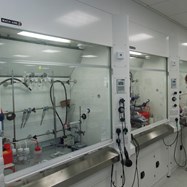Why we need QR funding
12 June 2019
Stephanie Smith, Senior Policy Analyst at the Russell Group, writes about the dangers of the continuing decline of research funding.
Quality-related, or ‘QR’ research funding, is the invisible force holding up the UK’s research ecosystem.
Without it, much vital research activity would not have happened in this country, from the development of graphene, to the discovery of new tests and treatments for diabetes, depression, dementia and many more.
Awarded on a competitive basis to universities depending on their performance in the Research Excellence Framework (REF), the great strength of QR funding is that institutions are free to deploy it to wherever it is most effective. This is essential if they are to engage in long-term strategic planning for research. From investing in new departments and institutes (UCL used QR to establish the Institute for Innovation and Public Purpose) to getting businesses to invest in R&D (the University of Warwick drew in funds from the pharma industry to co-finance PhDs students working jointly across business and the university), and building new lab space (such as the Bioenterprises Innovation Centre at Queen Mary University of London, the largest purpose-built commercial lab space available for businesses to rent in London): QR is woven across the best of UK R&D.
QR is also increasingly being asked to support other types of research activity. When a researcher wins a grant from a charity, QR is expected to cover the indirect costs of their project: the salaries of the administrative staff working on grant reporting, or the electricity powering their electron microscopes. When someone wins a Research Council grant, on average the award will only cover 72% of their full economic costs. Again, QR picks up the slack.
And when it comes to supporting and retaining talent, without QR we’d be lost. The University of Nottingham, for example, uses these funds to keep around 200 of its researchers on permanent contracts and the University of Birmingham has used QR to establish the Birmingham Fellows scheme, providing nearly 100 early career researchers with 5-year appointments to undertake their own protected research.
A Q(R)uiet funding crisis
Yet, just as QR is being expected to do more its value is being eroded.
When I tell people that over the last 7 years, QR has seen a real-terms fall in its value of 13%, I’m regularly met with surprise. The general view is that QR has flatlined – a claim repeated at a recent Select Committee hearing when UKRI described the level of QR funding as having remained “pretty constant.”
This is a regularly touted myth which we need to bust. To be fair to the official in question, when asked about QR they also said: “To be honest, from 2010, it may have gone down a little in real terms.” But our analysis suggests a much more concerning picture than “a little” decrease.
QR in England only appears to have remained flat if we ignore the impact of inflation on prices, and the fact that overall figures for QR now sometimes include the ‘QR element’ of the Global Challenges Research Fund (GCRF). While highly valuable, GCRF QR must meet the Official Development Assistance (ODA) requirements, which stipulate that only research directly and primarily of benefit to the problems of certain developing countries may be funded. This makes it a fundamentally different beast to regular QR, which puts researchers in the driving seat, and is not subject to any such restrictions.
In reality, once these factors have been taken into account, our analysis reveals there has been a 12.8% real-terms decline in QR across the higher education sector in England, from the years 2010/11 through to 2017/18.
The data bit
Figures on QR are surprisingly hard to get hold of: the HESA finance record for example doesn’t list QR as a separate funding source, instead providing a value for “recurrent research grant funding” from Research England, which includes funding for knowledge exchange, not just QR. This means that whenever I refer to the near 13% drop, I’m asked where it comes from. The answer is from trawling through the archives of the HEFCE website, from which the following picture emerges.
In 2010/11 QR was worth £1,602,999,996 (the link to this figure can be found here). If we apply the GDP deflator of 1.115 required to bring these figures up to 2017/18 prices, this gives us a 2010/11 figure of £1,787,344,996. In 2017/18, QR funding (minus its GCRF element) was worth £1,558,227,365, giving us a decline of 12.8% (the link to the 2017/18 figures can be found here).
The reality is therefore much starker than the flatlining narrative suggests. If this trend continues, it will be felt right across the UK’s research base.
While business and others benefit from the outcomes of basic research, they will often only invest in the more developed ‘innovation’ end of the research spectrum, as such investments are less risky and easier to justify to their backers.
Government thus urgently needs to understand that, if it allows QR to erode further, no other funder is likely to step into the gap left behind. This threatens not just the Government’s much-touted Industrial Strategy, but its entire agenda for how R&D will power growth after Brexit.
Innovation cannot happen without the basic research which underpins it. If Ministers are serious about making the UK an innovation economy, it’s time they support QR and come good on their word.
Previously published by WonkHE.
-
Adam Clarke
adam.clarke@russellgroup.ac.uk
020 3816 1302
-
Stephanie Smith
020 3816 1310
 X
X


